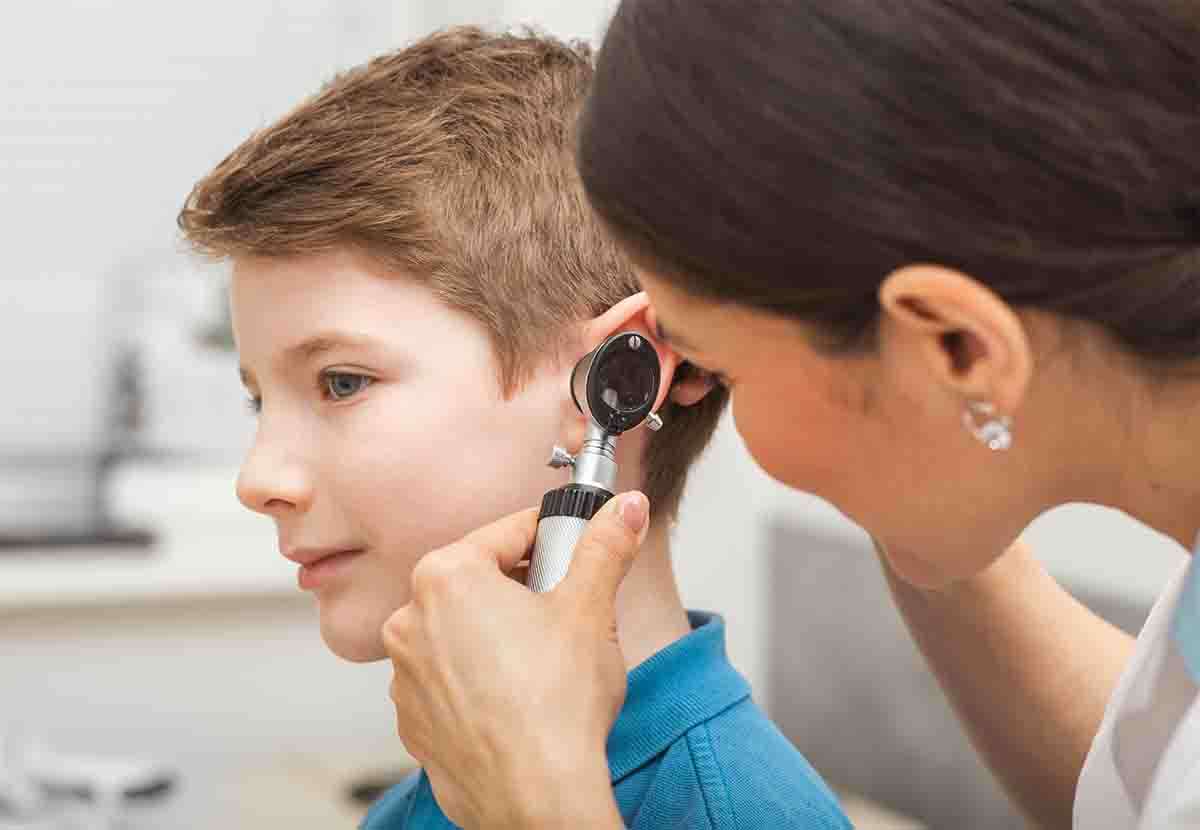Ear Infections and Ear Tubes
Ear tubes are typically advised if your child suffers 3+ ear infections within a six-month period, or if there are 4+ ear infections within a year.

Ear Infections in Babies and Children
An ear infection occurs when pathogens – viruses or bacteria – start to make a home in the middle ear. The middle ear is the part of the ear that’s, well, in the middle. It’s the space between the eardrum and the cochlea of the inner ear. Often, an ear infection happens after some sort of upper respiratory tract infection, such as a cold or flu.
Children are particularly prone to middle ear infections because of the anatomy of the Eustachian tube, a narrow channel joining the middle ear to back of the throat. The purpose of this tube is to allow drainage of fluid from the middle ear and equalization of pressure. However, compared to an adult, the Eustachian tube of a child is shorter, narrower, and more horizontal (rather than slanted), which doesn’t make for great drainage. These channels can become blocked with mucus, especially after a particularly snotty cold, or become swollen. In short, not only does the drainage ability of these Eustachian tubes become compromised, they also end up creating an environment that’s perfect for bacteria to grow. Children also are still developing their immune systems, making them more prone to infections in general.
If your child is pre-verbal, it can be hard for them to tell you, “Hey mom/dad, I do believe I have a middle ear infection.” Instead, you may notice symptoms such as:
- Unusual fussiness
- Tugging or rubbing at their ear
- Difficulty getting to sleep
- Fluid leaking from the ear
- Appearing particularly uncomfortable when lying down, such as crying or fussing
- Unusual clumsiness or poor balance
Ear Infection Treatment
Not all ear infections need treatment. Often, your child’s doctor may prefer to just monitor, as many of these cases will self-resolve. Ear infections due to bacteria can be treated with oral antibiotics, while viral causes will just need time to go away on their own. You can support your child through these days with painkillers or anti-fever medications on the advice of your ENT doctor. However, some children can be prone to recurrent or persistent ear infections.
While a once-off or even thrice-off ear infection is not that big a deal, frequent episodes can lead to some more serious problems in young children which can include with developmental delays that rely on good hearing, such as speech or learning social skills. Hearing loss and damage to the eardrum can also be a result of recurrent ear infections.
If your child is at risk of these complications, your family physician may refer you to an ENT (ear, nose, throat) surgeon to consider the insertion of an ear tube. Ear tubes are also recommended if your child suffers three or more episodes of an ear infection within a six-month period, or if there are four or more episodes within a year.
All About Ear Tubes
Ear tubes are tiny shunts inserted into the middle ear to aid drainage as an alternative channel to the Eustachian tubes. They’re also known as ventilation tubes, tympanostomy tubes, myringotomy tubes, or pressure equalization (PE) tubes. Obviously, it’s easier to just call them ear tubes!
Young children will be placed under general anesthesia for the operation while older children may be awake and conscious for the procedure if they’re able to sit still and are not too anxious. The doctor creates a small incision in the eardrum with a bladed tool or a laser. Excess fluid from the middle ear can be removed with a suction device, and then the ear tube is inserted into the hole in the eardrum. Having this extra channel here improves the ear’s ability to stabilize air pressure, allows healthy airflow into the middle ear, and allows the drainage of fluid to the back of the throat. All of this serves to reduce the risk of ear infections and pain from pressure and fluid build-up. The operation for an ear tube takes around 10 to 15 minutes.
Ear tubes are usually designed to fall out of the ear on their own between four and 18 months as the eardrum naturally heals. However, some may fall out sooner than desired, or stay in for too long. In these cases, your child may need another visit to the surgeon to either reinsert the tube or remove it.
The recovery from an ear tube procedure is usually uneventful. This type of operation is known to be safe and uncomplicated. Most children are fine to go home within a few hours after their procedure. If they were put under with general anesthetic, they may be a bit disgruntled and grumpy but will eventually cheer up around 24 hours later. If all has gone according to plan, the usual review with the doctor is 2-4 weeks after the ear tube procedure. Your child may also need a follow-up hearing test.
In the unlikely event of a complication from the ear tube procedure, it’s good to know the symptoms and risks:
- An ear infection
- Bleeding of the ear
- Scarring of the eardrum
- Too much fluid drainage from the middle ear
- The tubes become blocked with mucus or blood
- This is why it’s important to keep to the scheduled visit to your ENT doctor after the ear tube procedure, and, as a parent or guardian, to act on your gut instincts if something doesn’t feel right.
Although the thought of surgery on your precious child can be anxiety-provoking, ear tubes are the most common outpatient procedure performed on children in the US. Every year, around 700,000 ear tubes are inserted into little ears. If your little one is having problems with frequent ear infections or are demonstrating other signs such as a speech delay, see your pediatrician or family physician for advice.
